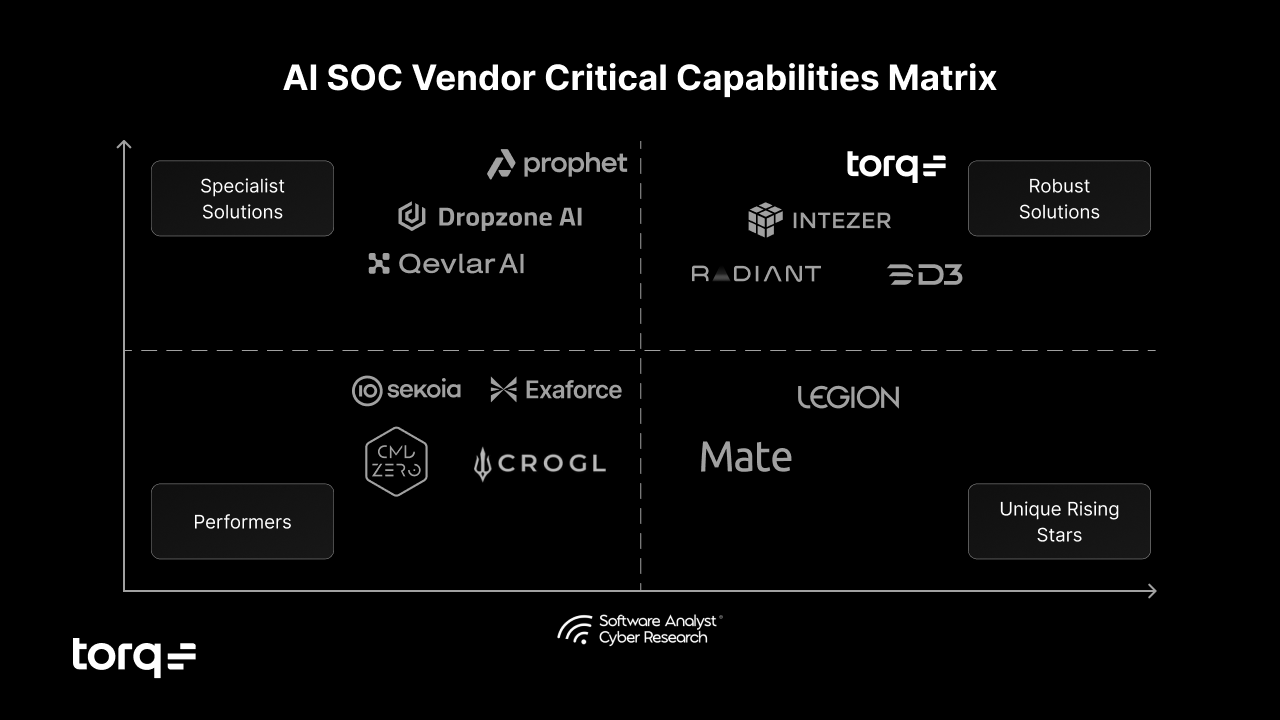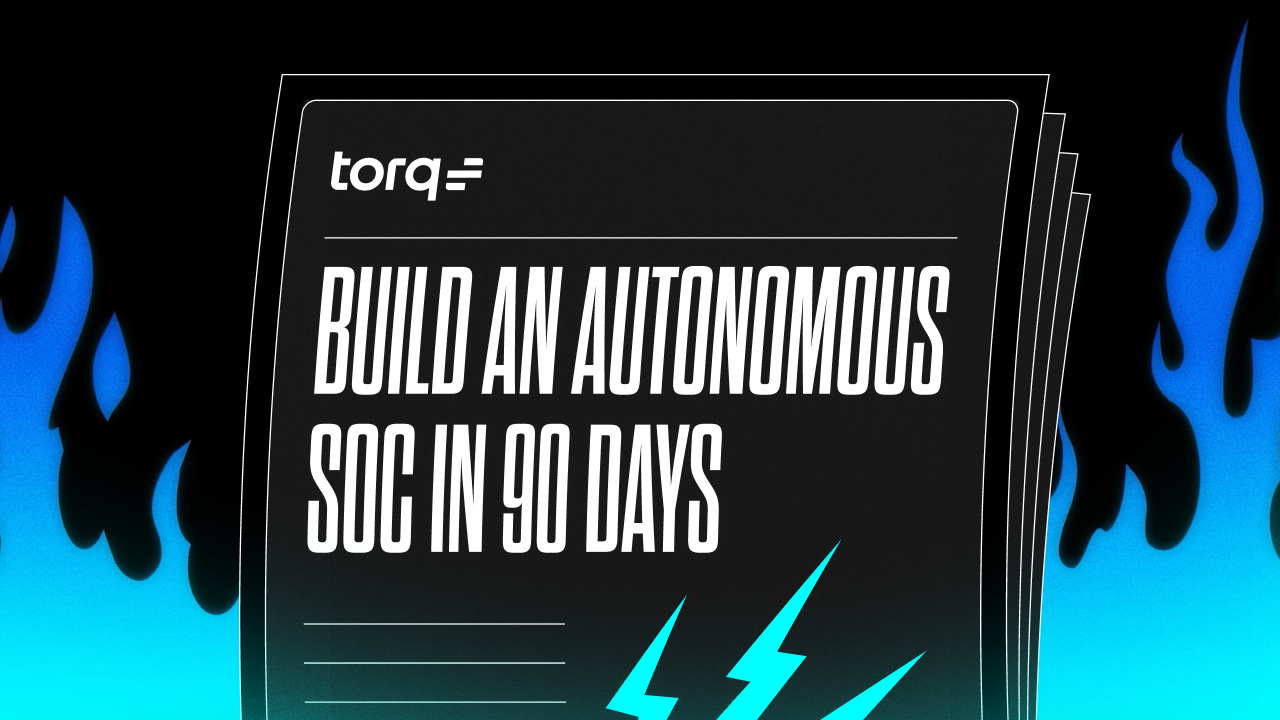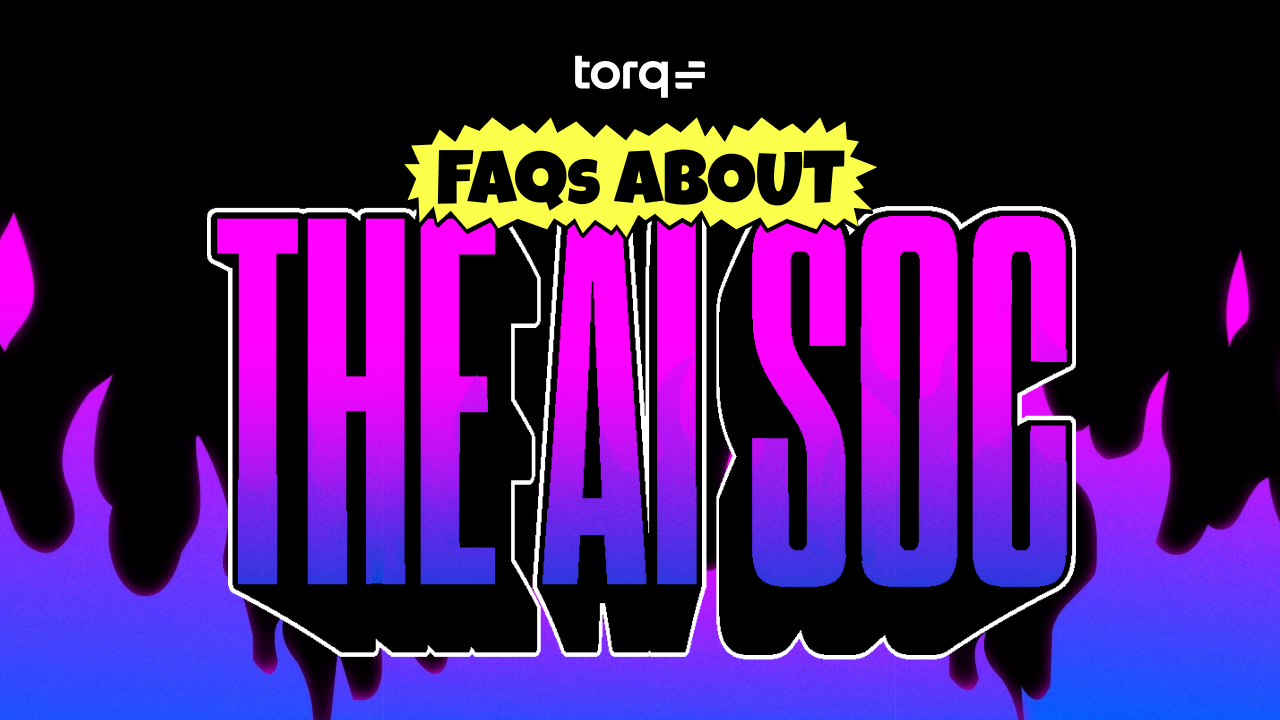Contents
Get a Personalized Demo
See how Torq harnesses AI in your SOC to detect, prioritize, and respond to threats faster.
The SACR 2025 AI SOC Market Landscape Report just dropped, and Torq was named one of the “most feature-rich platforms” on the market.
Not because we bolted a chatbot onto triage. But because we’ve built an AI SOC platform modern security teams actually need: an AI-native, execution-first infrastructure that operationalizes intelligence at scale.
And that platform works.
Other Vendors Build Features. Torq Builds the Foundation.
According to Francis Odum and Rafal Kitab from Software Analyst Cyber Research’s survey of 300+ CISOs:
- Enterprises are battling over 3,000 alerts per day, across 28+ tools
- 40% of alerts go uninvestigated
- 61% of teams have ignored alerts that turned out to be critical
- The average investigation time is 70 minutes
- Meanwhile, phishing breaches succeed in under 60 minutes

The takeaway is that you don’t need another AI assistant. You need a system that executes. The winners in the AI SOC space won’t be the ones with the flashiest chat UI — they’ll be the ones that reduce MTTR, scale across fragmented environments, and adapt faster than threats evolve.
That’s Torq.
AI is Only as Useful as Where It Lives
Francis Odum and his team break the AI SOC market into several architectural approaches: black-box overlays, workflow emulators, and Integrated AI SOC Platforms. Only a handful of vendors made that top-tier designation. Torq is one of them.
Here’s what that means in practice:
- Agentic AI works inside your environment. It uses hundreds of APIs, headless modes, and Slack/Teams interactions to collect context and execute actions.
- The platform is horizontally scalable, with active monitoring by engineering for peak load performance.
- Time to full operation is measured in weeks.
- Day 1–3: Core setup and integrations
- Day 4–7: Early automation with templates
- Weeks 2–3: Advanced workflows and AI agent deployment
- Weeks 3–4: Full operational status
Why does that matter? Because AI on the outside can only suggest. AI on the inside can act. Agentic AI has massive potential, but it’s only as powerful as the system it operates in.
Most Vendors Promise Outcomes. Torq Delivers Infrastructure.
The AI SOC space is crowded. As the SACR report points out, most vendors are chasing the same three problems: alert triage, investigation acceleration, and co-pilot-style assistance. These are necessary, but not enough.
Unlike black-box platforms, Torq provides full visibility and control over every AI-driven decision.
1. AI decisions are explainable.
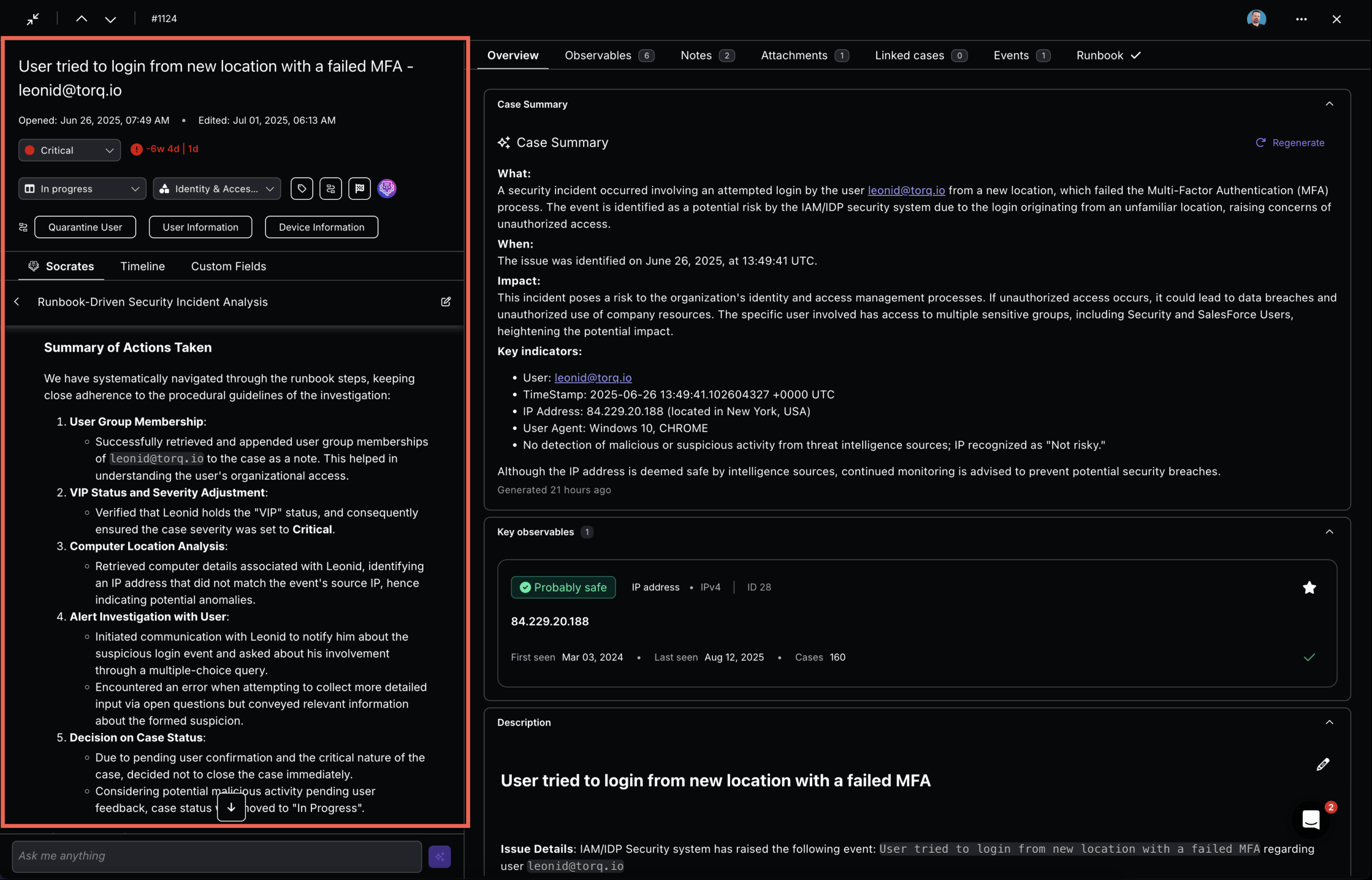
2. Human feedback is instantly integrated.
3. Automation logic is entirely customizable via a visual no-code editor.

In the report, Francis Odum stated that Torq “exceeds expectations for features that AI SOC platforms typically bring.” That’s because we’re not just building features; we are the central nervous system of your security operations, designed to:
- Consolidate fragmented workflows across identity, cloud, endpoint, and email
- Trigger and scale real-time responses
- Integrate agentic decision-making into every step
- Operate in hybrid, cloud, and air-gapped environments
As Odum and Kitab note, integrated platforms like Torq are the only architecture that delivers both control and execution at scale.
Enterprise-Grade Infrastructure That Goes Beyond Detection and Response
The SACR report evaluated vendors across operational metrics that matter: investigation speed, alert validation, explainability, contextual enrichment, and performance at scale. Torq stood out because we’re operationally mature and built for enterprise SOCs and MSSPs.
Odum and Kitab’s deep dive surfaced more of Torq’s infrastructure-level advantages, including:
- 300+ out-of-the-box integrations
- Hybrid, on-prem, and air-gapped deployment options
- Support for BYOC (Bring Your Own Container)
- Log storage, threat hunting, and artifact analysis baked in
- Multi-tenancy, full governance, and deletion controls for MSSP and enterprise use
- Support for all major compliance frameworks
Not Another Tool — A True Operating Layer
When the report highlighted Torq’s “broad capabilities” in the market, they weren’t just referring to feature count. They were pointing to depth — to a platform that can power CSPM, IAM, threat hunting, email security, incident response, and more, from a single, configurable foundation.
Modern SOCs aren’t one-size-fits-all. Whether you’re running an internal team or an MSSP serving 50 clients, you need a platform that:
- Operates autonomously, not in isolation
- Handles governance, not just generative reasoning
- Executes decisions, not just recommends them
Choose the Platform That Makes AI Work
There’s a lot of noise in this market. Most vendors are in the early innings — or worse, locked in pre-packaged black boxes that leave you with no customization, transparency, or control.
Torq’s take is simple: AI isn’t the product. AI is the engine. The product is the system that runs it. So if you’re still comparing AI SOC tools by which one has the slickest co-pilot or the prettiest chat interface, you’re playing the wrong game.
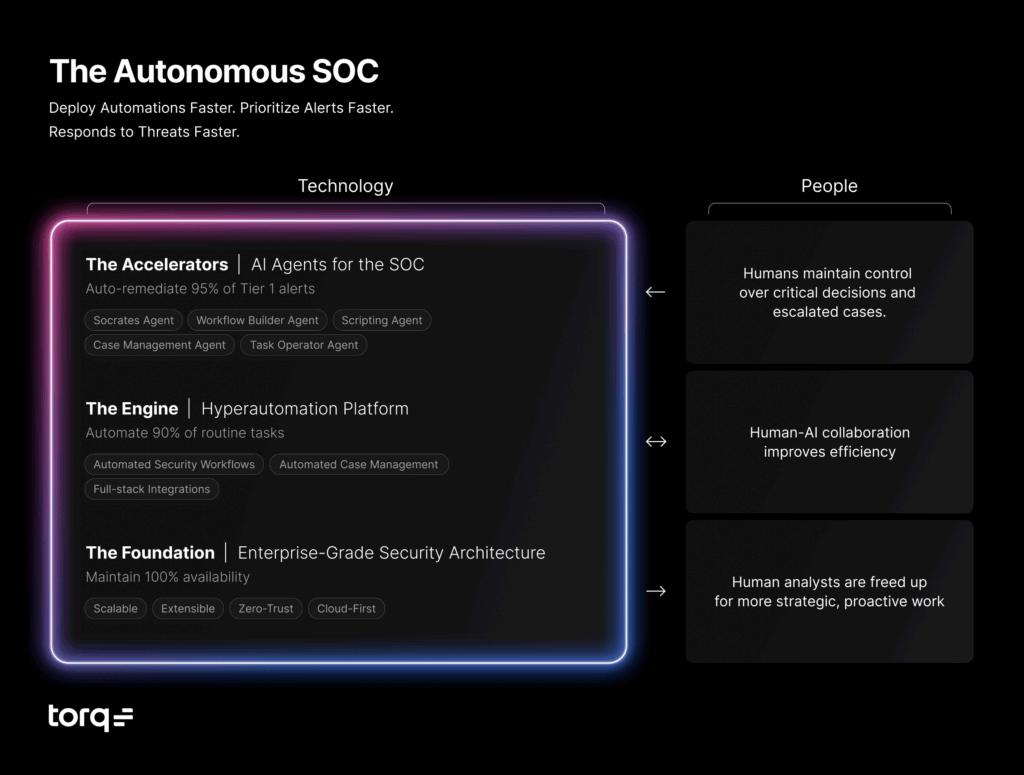
You should be asking:
- Does this platform give me executional control?
- Can I modify logic and workflows without code?
- Is the AI embedded — or sitting on the sidelines?
- Can it handle my real-world scale, load, and compliance needs?
- Can I trust what it does — and see how it got there?
If the answer isn’t “yes” across the board, it’s not built for where SOCs are headed.
Torq is. And now, thanks to SACR’s 2025 report, the industry knows it too.
Build the execution-first SOC the SACR report points to: transparent, scalable, and enterprise-ready. Read our Don’t Die, Get Torq Manifesto to learn more.

